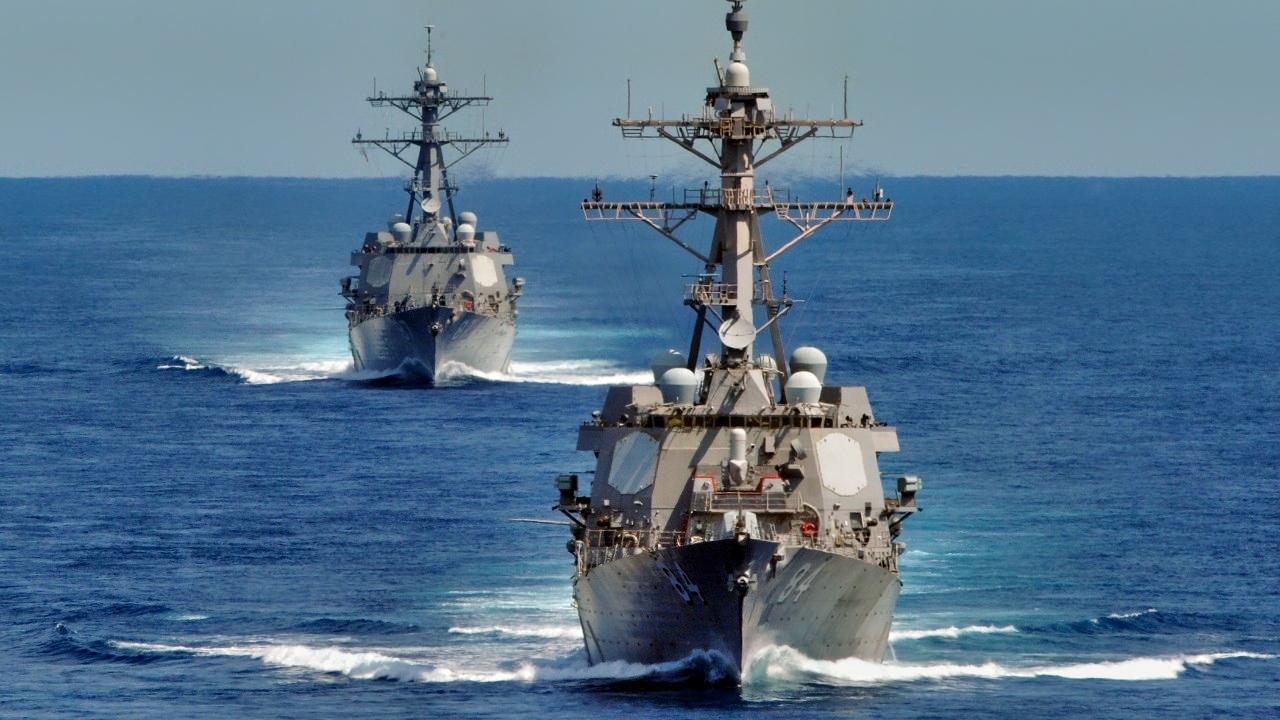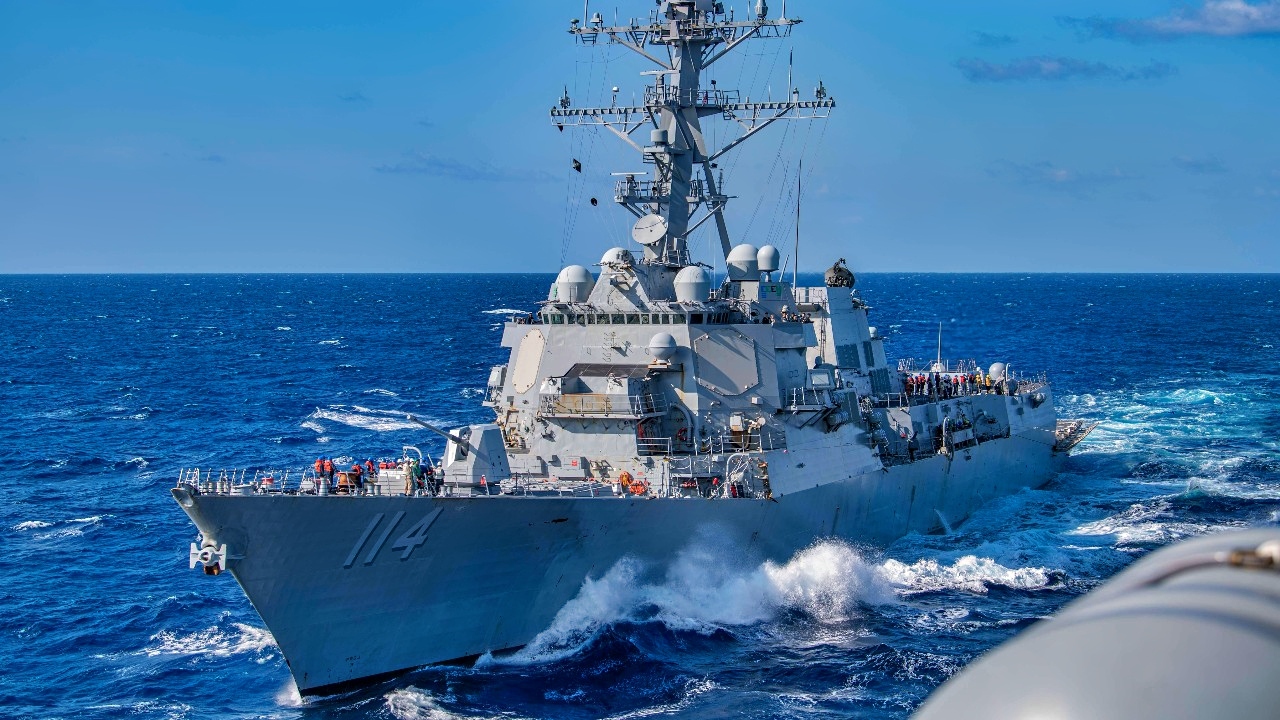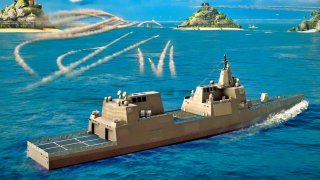The U.S. Navy's DDG(X) Nightmare Explained in 1 Number
With estimates reaching $3.5 billion per DDG(X) destroyer, Congress has raised concerns about affordability. Despite this, the next-gen destroyer’s potential could prove critical in a South China Sea conflict with China.
What You Need to Know: As tensions with China escalate, the U.S. Navy’s DDG(X) destroyer program aims to modernize its fleet with enhanced firepower, survivability, and directed energy weapon capabilities. Positioned to surpass the Arleigh Burke and Zumwalt classes, DDG(X) will carry advanced systems like 96 Vertical Launch System cells and Rolling Airframe Missile launchers.

-However, the program faces skepticism due to the Navy’s costly history with projects like the Zumwalt-class.
-The Number: With estimates reaching $3.5 billion per destroyer, Congress has raised concerns about affordability. Despite this, the next-gen destroyer’s potential could prove critical in a South China Sea conflict with China.
DDG(X) Destroyer: U.S. Navy's Bold Next Step Amid South China Sea Tensions
As tensions between Washington and Beijing continue to mount in the South China Sea, the U.S. Navy is set out to upgrade its naval capabilities. From aircraft carriers and fighter jets to submarines and destroyers, the service is looking to upgrade its sea-based arsenal all around. The Navy’s upcoming DDG(X) destroyer program is being designed to fulfill this objective. However, the service’s rocky past procurements including the Littoral Combat Ship programs and the Zumwalt-destroyer may impact confidence in this next-generation platform.
Currently, the Navy’s Arleigh Burke-class (DDG-51) and Zumwalt-class (DDG-1000) make up the service’s destroyer class. Representing the mainstay of the Navy’s surface fleet, these guided missile destroyers are quite essential to the service’s efforts at sea. Capable of operating independently, or as part of a carrier strike group alongside an aircraft carrier, the destroyer would undoubtedly play a key role in any future kinetic conflict between the U.S. and China.
To thwart Beijing’s growing naval advances, the DDG(X) is being conceptualized to exceed the capabilities of its predecessors. Back in 2010, the Navy’s Next Generation Cruiser CG(X) program was designed as part of the service’s post-Cold War strategy.
Ultimately, however, this idea was nixed and the Navy instead developed the Flight III Arleigh Burke-class destroyers to fulfill this role. Once CG(X) was canceled, the service launched a Future Surface Combatant study which would evolve into DDG(X). While the Navy retains the primary design role in the next-generation destroyer program, manufacturer Gibbs & Cox has been contracted to provide engineering and design support.

Specs & Capabilities for DDG(X)
Perhaps most significantly, the DDG(X) will be required to be able to host Directed Energy weapons (DE) as they are developed.
As detailed by the U.S. Naval Institute, “Capabilities that we’re going to need for the 21st century to continue combating the threat are increased missile capability sensor growth, directed energy weapons, which require a lot of power, increased survivability, and increased power availability.” Armament-wise, the upcoming destroyer will be equipped with 96 Vertical Launch Systems cells, two Rolling Airframe Missile launchers, and a large mid-body hull section which will enable even more weapons to be incorporated into the warship.
Last December, a Congressional Research Services report questioned the cost-value of the new destroyer program. Specifically, the report examined whether the Navy’s budget will allow for the procurement of DDG(X)s in desired numbers while ensuring other programs are similarly funded, “The October 2023 Congressional Budget Office (CBO) report estimates the DDG(X)’s average procurement cost in constant FY2023 dollars at $3.2 billion to $3.5 billion, about thirty-three percent to forty percent more than the Navy’s estimate of $2.4 billion to $2.5 billion. The CBO and Navy estimates are about forty-five percent to fifty-nine percent, and nine percent to fourteen percent, respectively, more than the DDG-51’s procurement cost of about $2.2 billion.”
Despite the DDG(X) program’s rising costs, the necessity of a next-generation destroyer class could play an important role if a conflict does erupt in the South China Sea.
About the Author: Maya Carlin
Maya Carlin, National Security Writer with The National Interest, is an analyst with the Center for Security Policy and a former Anna Sobol Levy Fellow at IDC Herzliya in Israel. She has by-lines in many publications, including The National Interest, Jerusalem Post, and Times of Israel. You can follow her on Twitter: @MayaCarlin.
Image Credit: Creative Commons and/or Shutterstock.


